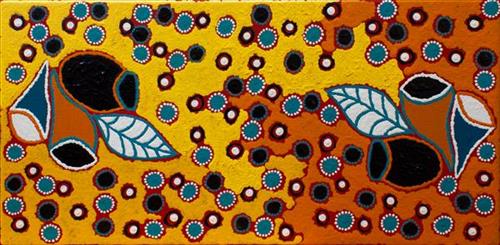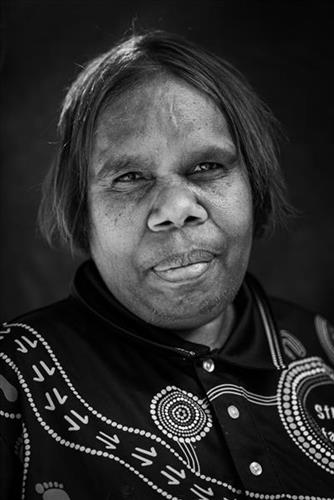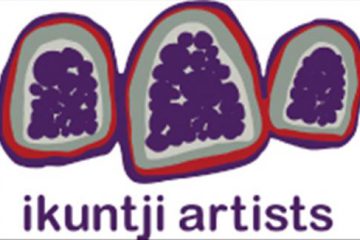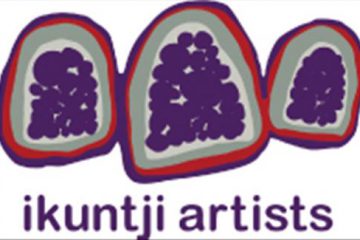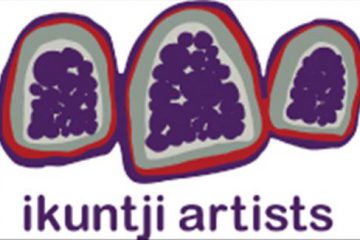220282371097
Arrngali (Bush Cherry)
“You can find this arrngali in tali area. It’s bush cherry, the arrngali. You can eat it. The leaves are greeny-blue, it’s got a stick on it. You can cut the sticks and put them in boiling water, the colour is like blackcurrent juice, you can drink that when it’s warm, it’s a good medicine for drinking. For anything, and for the diabetic. That’s what the arrngali is used for. The black and white in the painting is what the inside of the arrngali looks like, the white is the seed, the black part is the cherry. It’s like looking at the cross section. The background is red sand, tali.” – Joyce Dixon
